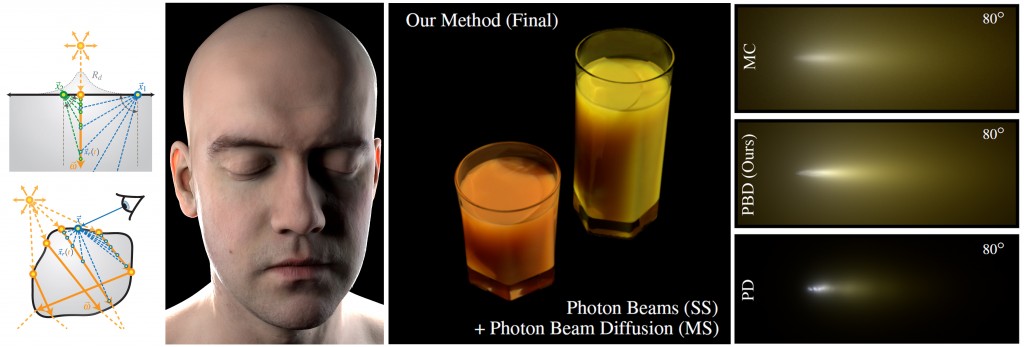Abstract

We present photon beam diffusion, an efficient numerical method for accurately rendering translucent materials. Our approach interprets incident light as a continuous beam of photons inside the material. Numerically integrating diffusion from such extended sources has long been assumed computationally prohibitive, leading to the ubiquitous single-depth dipole approximation and the recent analytic sum-of-Gaussians approach employed by Quantized Diffusion. In this paper, we show that numerical integration of the extended beam is not only feasible, but provides increased speed, flexibility, numerical stability, and ease of implementation, while retaining the benefits of previous approaches. We leverage the improved diffusion model, but propose an efficient and numerically stable Monte Carlo integration scheme that gives equivalent results using only 3–5 samples instead of 20–60 Gaussians as in previous work. Our method can account for finite and multi-layer materials, and additionally supports directional incident effects at surfaces. We also propose a novel diffuse exact single-scattering term which can be integrated in tandem with the multi-scattering approximation. Our numerical approach furthermore allows us to easily correct inaccuracies of the diffusion model and even combine it with more general Monte Carlo rendering algorithms. We provide practical details necessary for efficient implementation, and demonstrate the versatility of our technique by incorporating it on top of several rendering algorithms in both research and production rendering systems.
Copyright Notice
The documents contained in these directories are included by the contributing authors as a means to ensure timely dissemination of scholarly and technical work on a non-commercial basis. Copyright and all rights therein are maintained by the authors or by other copyright holders, notwithstanding that they have offered their works here electronically. It is understood that all persons copying this information will adhere to the terms and constraints invoked by each author’s copyright. These works may not be reposted without the explicit permission of the copyright holder.